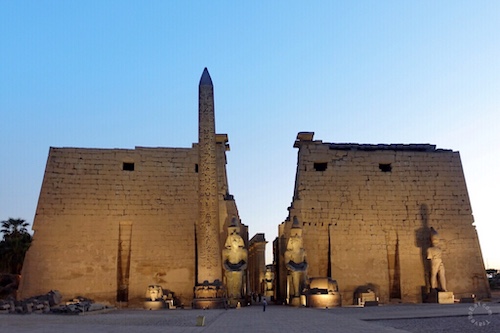
Luxor was an important political and religious center since it was the ancient city of Thebes, the capital of Egypt. “Luxor” derives from the Arabic al-uksur, meaning “fortifications”. That name in addition was adapted from the Latin castrum, which referred to the Roman fort built around the temple in the later third century AD. The temple of Luxor has, since its inception, always been a sacred site. The Temple of Luxor, located on the east bank of the Nile, was dedicated to the veneration of Amon/Amun (who was associated with Mut and Khonsu, the Theban triad). It was known in the New Kingdom period as Ipt-Rsyt, which means the southern shrine. This was to differentiate between this Temple and Karnak Temple, which was the northern house of Amon Ra. The first pylon is over 70 feet high, originally fronted by massive statues and two obelisks. There are several open areas, once used for various forms of worship but now empty. Later additions include a shrine to Alexander the Great, a Roman sanctuary, and a thirteenth century Islamic shrine to Abou El-Hagag. Built largely by Amenhotep III (ruled 1388-1351 BCE) and Ramesses II (ruled 1279-1213 BCE), it appears that the temple's purpose was for a suitable setting for the rituals of the festival of Opet. The festival itself was to reconcile the human aspect of the ruler with the divine office. Hence, Luxor Temple was the power base of the living divine king, and the foremost national shrine of the kings cult.
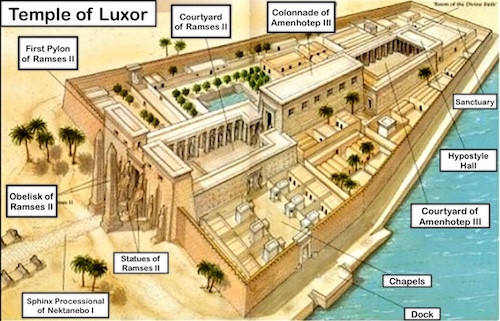
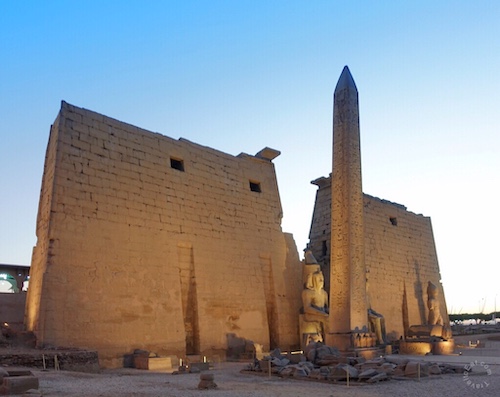

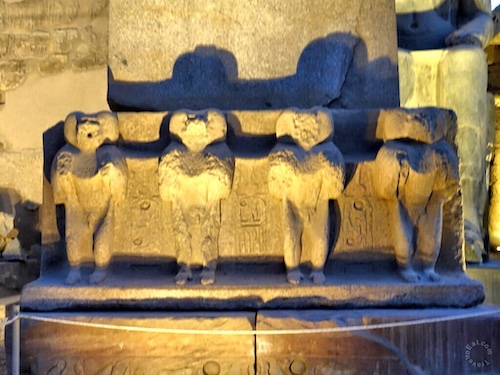

In front of the Great Pylon of Ramses II, there once were 2 obelisks. Only one of them remains standing. The other was transported in 1819 to La Place de le Concorde in Paris, as a gift to King Philip Louis of France by Mohamed Ali (who ruled Egypt 1805-1850 A.D), after he was given a French clock. The French obelisk, a yellow granite column, rises 23 meters (75 ft) high, including the base, and weighs over 250 metric tons (280 short tons). It is decorated with hieroglyphs exalting the reign of the king Ramses II. The original Egyptian pedestal included the statues of sixteen fully sexed baboons and was deemed too obscene for public exhibition, it is displayed in the Egyptian section of the Musée du Louvre. Missing its original pyramidion (believed stolen in the 6th century BC), the government of France added a gold-leafed pyramid cap to the top of the obelisk in 1998. You can read my full post on the Obélisque de Louxor in the Place de la Concorde in my separate post.
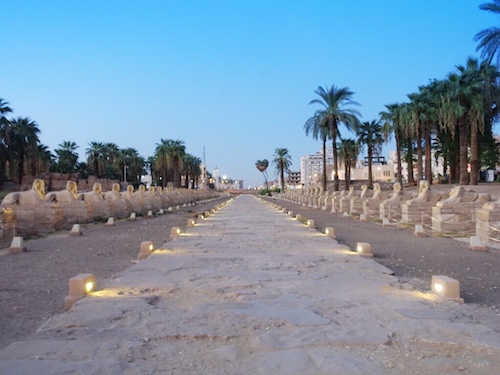
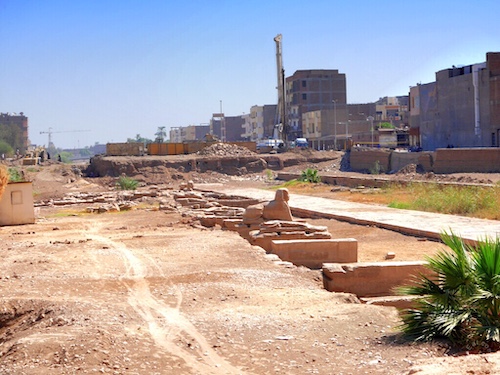
Nectanebo I (ruled 378-364 BCE) built or improved the Avenue of Sphinx in front of the temple that leads from the Temple of Luxor to Karnak, a distance of 2 miles or 3 km. Kheperkare Nakhtnebef, better known with his hellenized name Nectanebo I, was an ancient Egyptian pharaoh, founder of the last native dynasty of Egypt, the thirtieth. This is the same Nectanebo who built the Vestibule of the Temple of Isis at Philae, described in a previous post. Nectanebo was a great builder and restorer, to an extent not seen in Egypt for centuries. He ordered works on many of the temples across the country. The entire Temple of Luxor is surrounded by a large mudbrick enclosure wall built by Nectanebo I. Along the avenue there were originally 1350 sphinxes. Many of the stone guardians were removed and reused during the Roman period and the Middle Ages. The city of Luxor is currently performing excavations to expose the entire avenue.
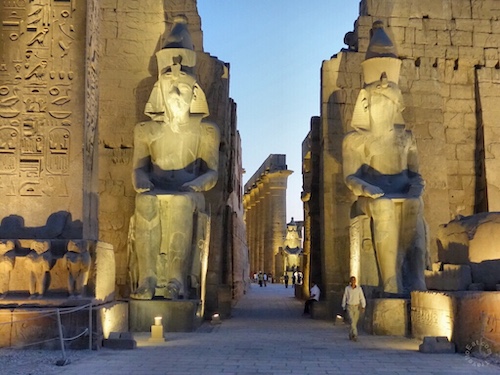
Flanking the gate of the first pylon, which is 24 meters (78.7feet) high, there are two seated colossi representing King Ramses II, seated on his throne, with all the royal features. Both towers of this pylon were once decorated with reliefs depicting the Battle of Kadesh, fought between the armies of Egypt and the Hittites, in present day Syria. There were also six standing statues in front of the Pylon; only one of them on the western side is still in place.
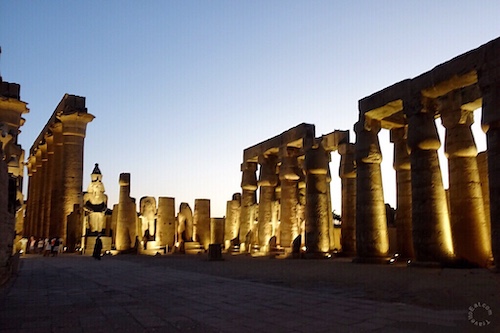

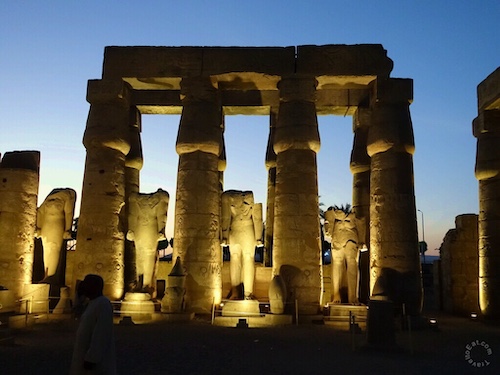
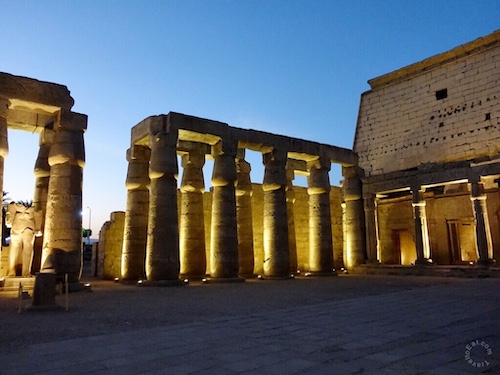
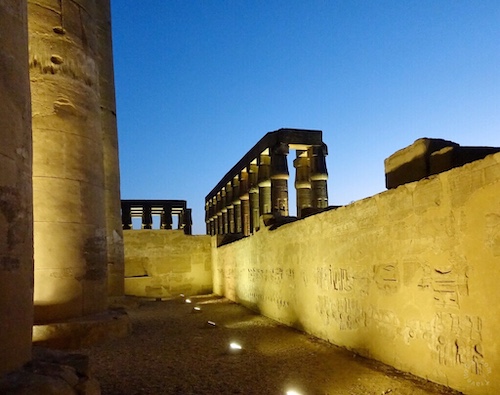
Beyond the first pylon Ramses II built a peristyle courtyard (replacing an earlier court thought to have been constructed by Amenhotep III) which was set at an angle to the rest of the temple in order to preserve three pre-existing barque shrines constructed by Hatshepsut (with later additions) which stand in the northwest corner. The Ramses II open court has double rows of 32 papyrus bud columns with giant statues between the columns. The courtyard of Ramses II is 188 feet (57 m) long, 168 feet (51 m) wide and surrounded with 74 papyrus columns. The colossal statues were of Amenhotep III which were usurped by Ramses II. Reliefs cover the interior walls surrounding the courtyard.

An additional two colossal seated statues of Ramses II sit at the entrance to the processional colonnade of Amenhotep III leading from the peristyle courtyard of Ramses II to the Great Sun Court of Amenhotep III.
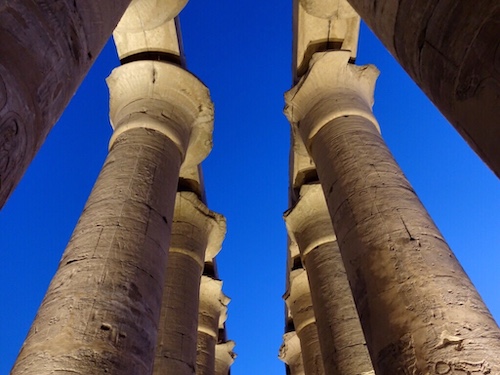
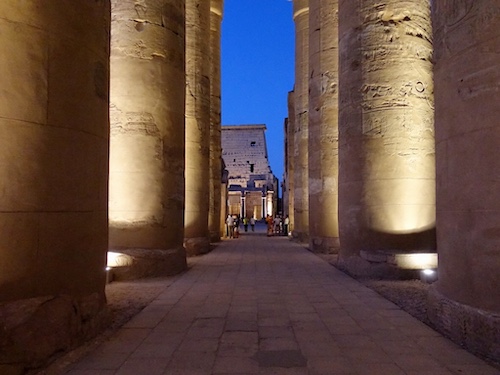

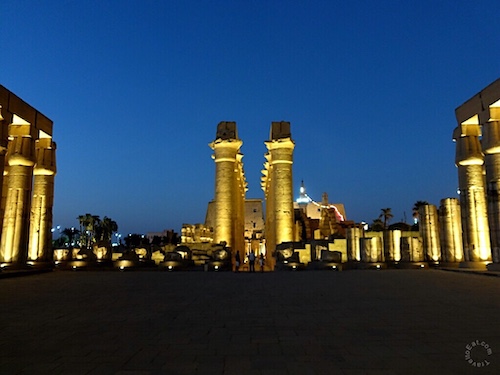
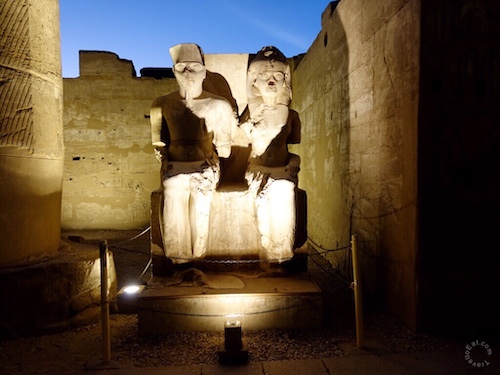
The processional colonnade of Amenhotep III runs for about 100 meters (328 feet) with seven papyrus columns on either side standing 19 meters high (62 ft 3 in). Two seated double statues of Amun and Mut are on the south side of the processional. When viewing from the Great Sun Court of Amenhotep III you can see the 13th century Mosque of Abu el-Haggag to the right.
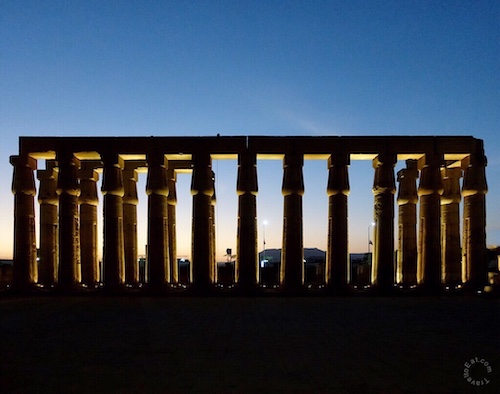

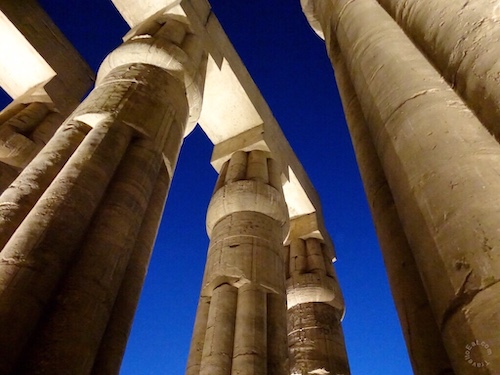

The Great Sun Court of Amenhotep III, which measures about 45.11 by 56.08 meters (148 by 184 feet) blends almost imperceptibly into a hypostyle hall. It is described as a hall of appearance (wsekhet kha'it). It consists of four rows of eight bundle papyrus columns that once supported a now non-existent roof. Through the center of these columns runs an aisle which leads to the entry to a smaller eight columned hall or portico which originally opened into the inner temple, but which was transformed by the Roman legion stationed at Luxor into a chapel dedicated to the imperial cult. At that time, the columns were removed. I will discuss the Sanctuary in a separate post.

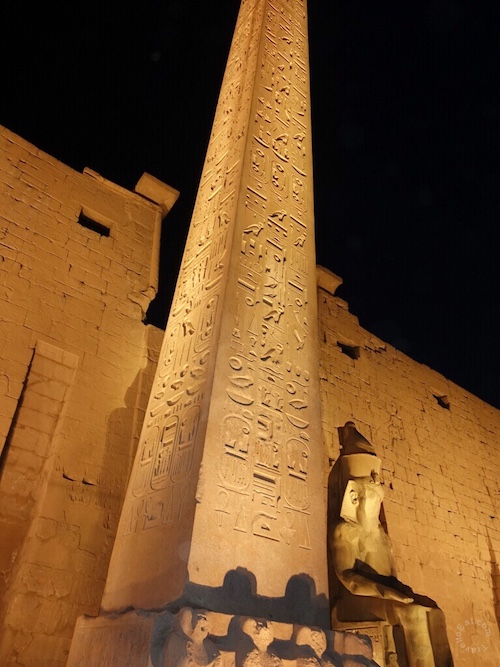

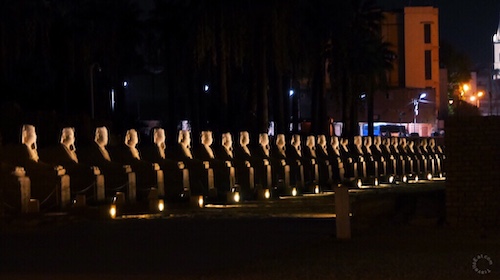
Aside from the historical context of the Temple of Luxor, it is a beautiful area to explore in the evening. As you can see, the entire complex is lit beautifully and it represents an opportunity to browse and admire in the comfort of evening. Yet another great place to visit if you are in Luxor. Let me know what you think and as always I hope you enjoyed the photos.
[mappress mapid=”140″]
References:
Tour Egypt: http://m.touregypt.net/featurestories/luxortemple.htm
Ask Alladin: http://www.ask-aladdin.com/Temples-of-Egypt/luxortemple.html
Bible Places: http://www.bibleplaces.com/luxortemple.htm
Skyscraper Page: http://skyscraperpage.com/cities/?buildingID=69158
Avenue of Sphinxes: http://www.independent.co.uk/life-style/history/excavation-and-restoration-on-the-avenue-of-sphinxes-1888212.html

